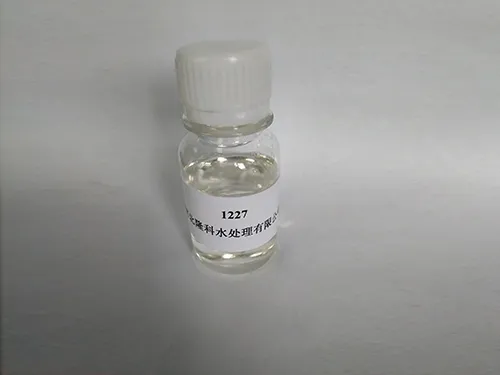An Overview of Diethylene Triamine Penta and Its Applications in Industry
Understanding Diethylene Triamine Penta- (DTPA) A Multifunctional Chelating Agent
Diethylene triamine pentaacetic acid (DTPA) is a synthetic chelating agent that plays an essential role in various chemical, industrial, and medical applications. Originally developed for its ability to bind metal ions, DTPA's versatility has positioned it as a critical compound in fields ranging from agriculture to pharmaceuticals. This article explores the structure, functionalities, and applications of DTPA, highlighting its significance in contemporary chemical sciences.
Chemical Structure and Properties
DTPA is a pentacarboxylic acid with the chemical formula C14H23N3O10. Its structure consists of a central nitrogen atom bonded to three primary amino groups and five carboxyl groups, which provide the molecule with the ability to coordinate with metal ions. This chelating property is a direct result of the multiple sites available for metal ion binding, making DTPA an effective agent for sequestering a variety of transition metals including iron, lead, and copper.
The solubility of DTPA in water enhances its practicality in various applications. Typically, it is presented in its acid form (DTPA-H) or as a sodium salt (DTPA-Na), depending on the intended use. DTPA's stability and effectiveness in binding metals make it an indispensable tool for controlling metal ion concentrations in different environments.
Applications of DTPA
1. Agriculture DTPA is commonly used in agriculture to improve the bioavailability of micronutrients for plants. It efficiently chelates essential metals like iron, allowing for easier uptake by crops, particularly in alkaline soils where mineral availability is often restricted. Utilization of DTPA in fertilizers ensures optimal nutrient delivery, enhancing plant growth and yield.
diethylene triamine penta

2. Industrial Processes In various industrial settings, DTPA is employed to remove metal ions from solutions, thus preventing unwanted reactions in chemical processes. For instance, in pulp and paper manufacturing, DTPA is utilized to control metal ion concentrations that could otherwise lead to discoloration or product degradation.
3. Medical Uses One of the most significant applications of DTPA is in the medical field as a diagnostic agent. It is used in nuclear medicine for the chelation and removal of radioactive isotopes from the body, such as plutonium, americium, and curium. DTPA's ability to form stable complexes with these heavy metals aids in the detoxification process, thereby minimizing potential health risks associated with exposure to radioactive materials.
4. Environmental Remediation DTPA also finds its place in environmental chemistry for the remediation of contaminated soils and water bodies. Its chelating ability can extract toxic metals from contaminated sites, facilitating their removal and decreasing environmental hazards.
Environmental and Health Considerations
While DTPA has numerous beneficial applications, it is essential to consider its environmental and health implications. The potential for DTPA to mobilize heavy metals raises concerns about the leaching of these toxins into groundwater systems. Although DTPA itself is not considered highly toxic, its impact on metal mobility necessitates careful assessment in environmental applications. Researchers continually investigate the long-term effects of chelating agents like DTPA to ensure that their use does not inadvertently harm ecosystems.
Conclusion
Diethylene triamine pentaacetic acid (DTPA) is a multifunctional chelating agent that has established itself as indispensable across various domains. From enhancing agricultural productivity to facilitating medical treatments and environmental cleanup, DTPA showcases its versatility and importance. As ongoing research delves into optimizing its applications while mitigating potential environmental impacts, DTPA will likely continue to play a crucial role in advancing numerous scientific fields. Understanding this compound's characteristics and functionalities is essential for leveraging its benefits responsibly in an ever-evolving chemical landscape.
-
Pbtc Scale InhibitorPBTC: A Scale Protector for Industrial Water TreatmentNewsAug.05,2025
-
Organic Phosphonate: An Efficient Defender in the Field of Scale InhibitionNewsAug.05,2025
-
Hydrolyzed Polymaleic Anhydride: Green Pioneer in Scale Inhibition FieldNewsAug.05,2025
-
PAPEMP Polyamino Polyether Methylene Phosphonic Acid For SaleNewsAug.05,2025
-
Flocculant Water Treatment: A Pioneer in Purification in the Field of Water TreatmentNewsAug.05,2025
-
Benzyl Isothiazolinone: An Efficient and Broad-Spectrum Antibacterial Protective GuardNewsAug.05,2025





